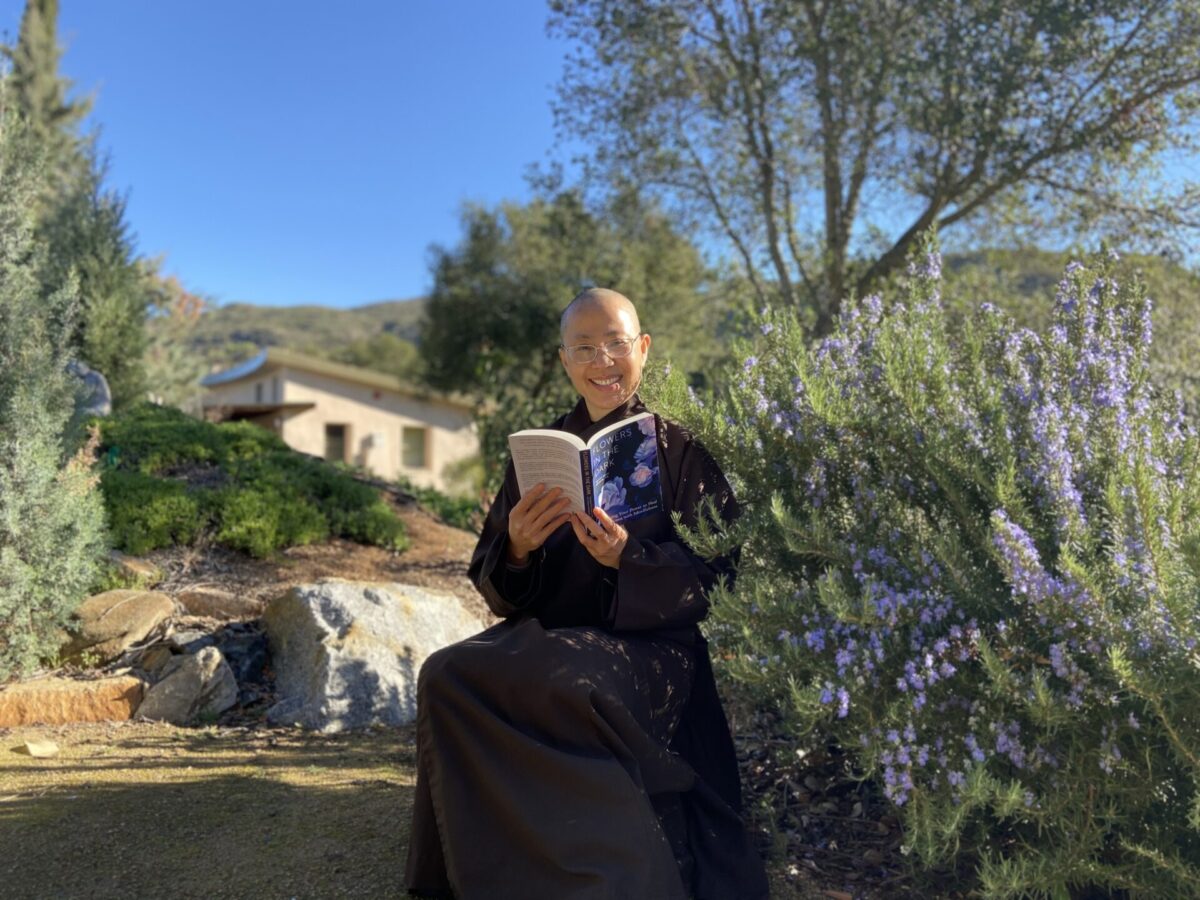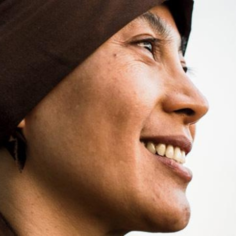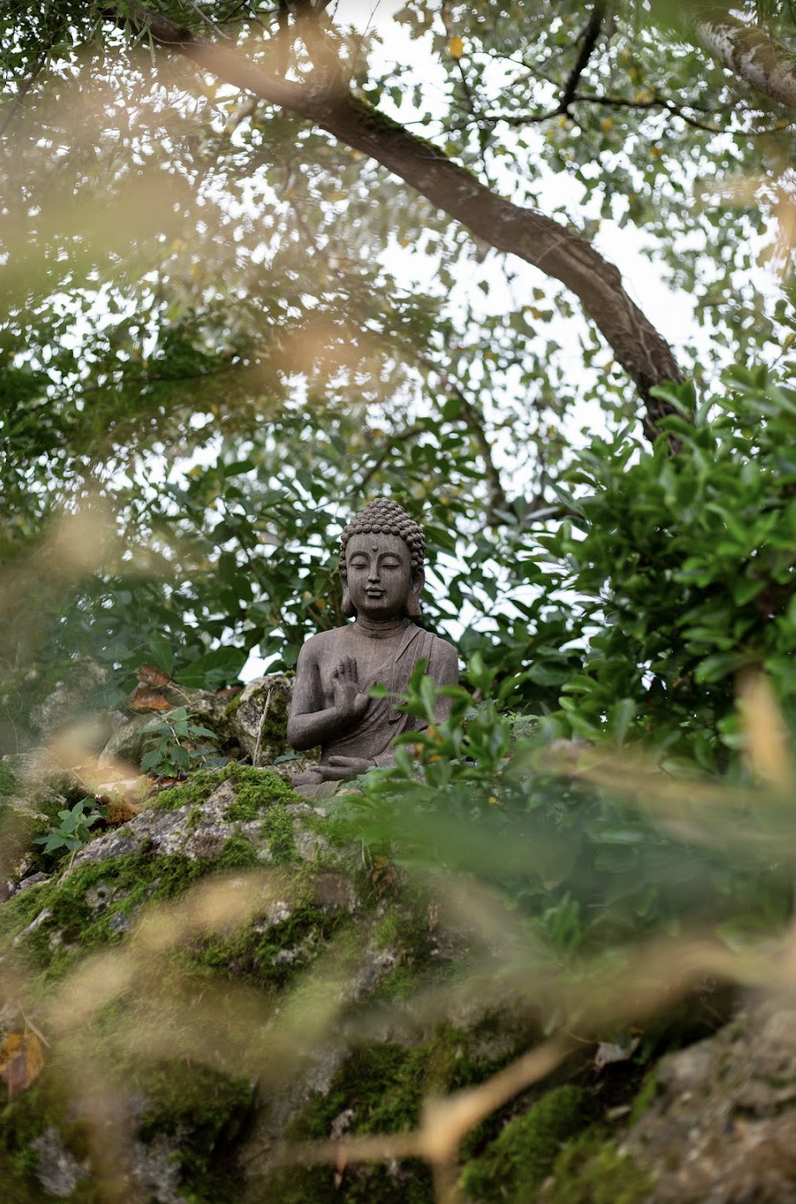By Sister Dang Nghiem on
The healer, the healed, and the healing are not separate entities—they inter-are. Therefore, we need to heal the healer for true healing to take place in ourselves, our patients, and the healthcare system.
Health care professionals suffer a lot from secondary trauma and burnout. We have our own life dramas and traumas, and then we accumulate and absorb all the stress and tension from our patients.
By Sister Dang Nghiem on
The healer, the healed, and the healing are not separate entities—they inter-are. Therefore, we need to heal the healer for true healing to take place in ourselves, our patients, and the healthcare system.
Health care professionals suffer a lot from secondary trauma and burnout. We have our own life dramas and traumas, and then we accumulate and absorb all the stress and tension from our patients. I trust that when we go into medicine, all of us have very good hearts and noble intentions. We want to help others, but slowly, we can become quite bitter and burned out. The work is no longer meaningful or nourishing for us. To take care of secondary trauma and burnout, we need to take better care of ourselves. The healer, the healed, and the healing are not separate entities—they inter-are. Therefore, we need to heal the healer for true healing to take place in ourselves, our patients, and the healthcare system.
When you go home, let go of your work. When you drive home, just breathe and enjoy the driving. Enjoy the beautiful scenery. Enjoy breathing and relaxing your body and mind. When you come to a red light, don’t tense up and feel you’ll need to speed up afterwards. Enjoy the red light, enjoy a moment of stopping. In that way, you practice driving meditation. Meditation means stopping and deep looking. If your mind is with your body and if your mind sees what is as it is, that’s meditation.

You've heard the word “mindfulness.” The Chinese character for mindfulness is this: 念. The upper part means “now,” the lower part means “heart” or “mind.” So mindfulness is the now mind, the now heart. Mindfulness means you remember what is in you, what is around you. And thus you know what to do and what not to do. That’s mindfulness.
Mindfulness is meditation. Sometimes we say mindful meditation but to me, that’s redundant. Mindfulness is meditation, because when you’re mindful, your mind stops running to the past and the future. Your mind is awake, alert, and aware of the time (here), the place (now), and the person (you and the one in front of you). Your mind sees what really is, not through the lens of the past or the lens of the future. Your mind can see with clarity what is, for its own value in this moment. When you cultivate the energy of mindfulness in yourself throughout the day, you don’t think, “Oh, I have to set aside an hour, which I don’t have, so I can do sitting meditation.” Instead, throughout the day you keep coming back to anchor in your own body and mind.
Be a soul mate to yourself, remembering, knowing, and taking good care of your body, your thoughts and feelings.
In our modern times, we say we’re too busy, we don’t have time for ourselves. But any free moment we get, we chit-chat or get out the phone. We waste a lot of time, always running away from ourselves. We are always neglecting and deserting ourselves. So I simply practice not having electronic gadgets. That's the easiest way, but since you have to work with them, when you don’t have to work, put away your iPhone, put away your laptop, so you can be there with yourself.
In Vietnamese, the words “soul mate” are “tri kỷ,” which means “to remember, to know, to master… oneself!” Be a soul mate to yourself, remembering, knowing, and taking good care of your body, your thoughts and feelings. Then, naturally you can be a soul mate to the person in front of you. That person may be your client, your child, your partner, somebody you may not ever see again. The quality of our presence, not the quantity, can be very healing, very long lasting. Too many people get so lost in their electronic gadgets. It’s a very effective and addictive way to desert ourselves.
You may have heard the word “karma.” Karma means actions of the mind, the mouth, and the body. Actions of the mind are thoughts and feelings, judgments, perceptions. Actions of the mouth are our speech, our words. Actions of the body are our behaviors. Whatever we think will come out of our mouth as speech and out of our body as behaviors. So, we must learn to care for our mind. But to care for our mind, we must learn to care for our body, to become more aware and sensitive to what’s going on to our body. Then, we have a chance to be more aware of our thoughts, emotions, and biases. Two or three hours on our computer are usually two or three hours that we are oblivious of ourselves, unaware of ourselves. So we learn to bring the mind back to the body through mindful breathing, mindful walking, mindful movements, so the mind doesn’t just run amok. Come back to the body and relax the body so the mind can also relax. When mind and body are in oneness, we feel safer in ourselves, and we are safer to ourselves and to others. Thus, true healing can take place.
Entering the spiritual life, many of us wish to heal our past. We recognize that we have a wounded child inside, a five year-old or a teenager who was abused in some way or had a difficult life. We may try to catch up with the past, but true to the spirit of interbeing, the past is here in the present moment. We don’t have to run to the past. In this very moment as you look at yourselves, as you look at your patients, you know the past. You know what the person has gone through. Just look at a person’s face and how they are holding their body. So, we take care of the present moment because the present moment is a manifestation of our past. We are who we are today because of our past.
In this moment, we can effect change. We can choose to think negatively or to practice deep listening and loving speech. In this moment, in the here, we have a chance to be a soul mate. And if we take good care of this present moment, it will become a beautiful past. When we look back, that time we spent with our patients in the office has become a beautiful past. So we don’t have to yearn for the past. We can actively build the past in every moment that we are mindful, kind, and loving.
And we can share with our patients, “You have lost an arm or a function, that is true, but let’s rejoice what you still have in this moment. Let’s work together to take good care of what you still have so you can go forward.”
This present moment also contains the future. We all anticipate the future. But this moment is the foundation for the future. If we learn to be a soul mate to this moment, to our body, to our mind, we will be able to take care of ourselves in the next moment, the next year. As nuns, we receive fifty dollars as our monthly allowance. That’s not much, yet I don’t worry about the future. I used to worry about the future, when I made more money and had more things. It’s not what we have that makes us feel stable and secure. When we learn to be present to what is, to breathe through the physical or emotional pain, to smile with it, to hold it with grace, we feel confident that we will not neglect and desert ourselves. And we will not neglect and desert our patients.
Throughout the day, we can come back to ourselves, breathing, smiling and relaxing the body and mind for a few minutes or a few breaths. Our body and our breathing are the safe island within. Our breathing is always there for us. Our body is always there for us, being a soul mate to us. Let us learn to be a soul mate to our body, our mind. Recognize when our body is holding the stress, tension or pain. Relax all the tension, send gratitude and love to each part of the body. Say quietly to yourself, “Thank you for being there for me. I’m here. I’m here for myself. I love you so. I love you so. I love you so.”
This is an excerpt from a Dharma talk by Sister Dang Nghiem in July 2019 at Kaiser Permanente, Harbor City, California, USA. The complete Dharma talk can be found on the Deer Park Dharmacast. Transcribed by Martina McNaboe. Edited by Leslie Rawls.


